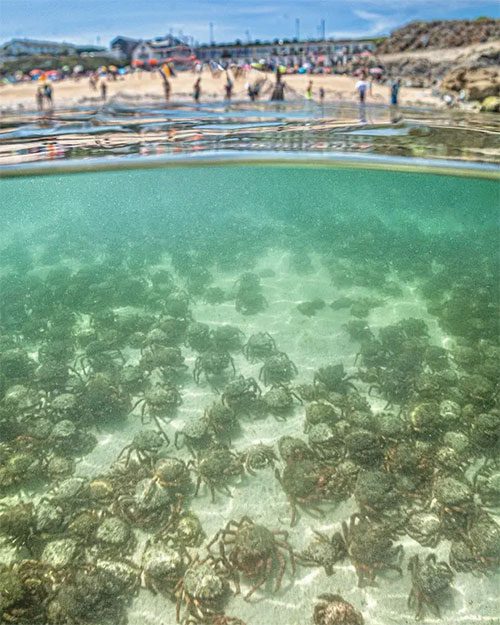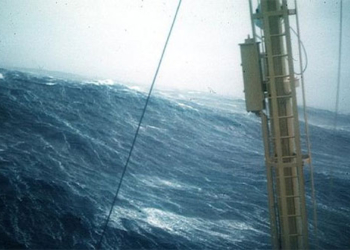The rise in sea temperatures due to climate change has led to an unusual phenomenon where thousands of spider crabs have invaded the shallow waters at St Ives beach in Cornwall.
Thousands of venomous crabs have swarmed into the shallow waters of St Ives to molt before returning to their usual depths of around 90 meters below sea level, the Guardian reported on August 6.

Spider crabs invade shallow waters at a beach in St Ives, Cornwall, UK to molt. (Photo: BNPS).
This crustacean species is easily recognizable due to its long legs and claws, armed with venom for hunting, though it is harmless to humans. However, their large presence at Porthgwidden beach was enough to drive many bathers away.
Kate Lowe, a photographer specializing in marine photography, captured this event.
“I dive most of the year, but I have never seen spider crabs in such numbers. When we returned to the shore, it looked like there were many dark rocks just beneath the surface of the water,” she said.
“Just stepping 2-3 steps into the water, there were thousands of crabs. It was truly unbelievable; the water was only knee-deep there. Many tourists screamed when they saw them. The shells of the crabs were floating around,” Kate described.
Experts say that the appearance of spider crabs in UK waters is not unusual, but the frequency of these mass invasions into shallow waters during the summer is increasing due to rising sea temperatures caused by climate change.
Spider crabs often gather in large numbers in shallow waters to protect themselves from predators during the molting process.





















































